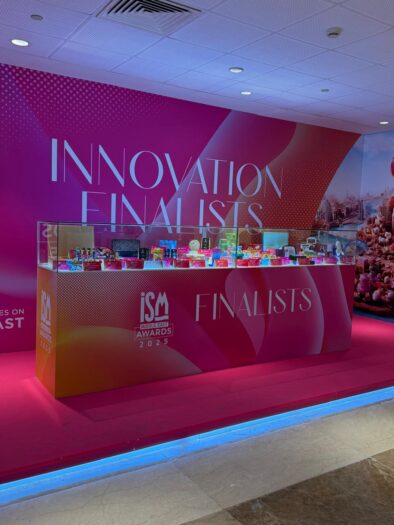By, SERKAN ORAL
I was visiting the International Sweets and Snacks Fair – Middle East (ISM Middle East) at DWTC last week and was impressed by what I realized about cacao and chocolate.
I talked with manufacturers, investors, and traders about the sweet sector. Shortly, this is important for Dubai.
FROM $4,600 TO $12,900 PER TONNE IN JUST 5 YEARS
In 2024, cocoa prices soared to a record high of over $12,900 per tonne, marking a 180% increase and outpacing gains in gold and silver.
The chocolate market in the UAE has expanded rapidly in recent years.
As of the latest figures, the market is estimated to be worth over $400 million, with an annual growth rate that reflects both increased consumption and variety in offerings.
There is high disposable income, a strong hospitality and tourism sector, gift-giving traditions, especially during Ramadan and Eid, and rising interest in premium and artisanal chocolates.
DUBAI CHOCOLATE IS A STAR
I had the chance to taste camel milk chocolates and luxury date-filled sweets as well as famous Dubai chocolate.
From Humble Beginnings To A Confectionery Capital
A few decades ago, chocolate in the UAE was largely an imported commodity—a status symbol gifted to friends and clients or served at weddings.
Local production was minimal, and supermarket shelves offered little more than global brands.
Then came a shift. As the UAE developed into a global business and tourism hub, demand for unique, high-end chocolate experiences began to rise.
Expatriates from Europe, North America, and beyond brought their own chocolate traditions. Entrepreneurs saw opportunities to blend these traditions with local tastes, introducing products like date-filled chocolates, saffron-infused truffles, and camel-milk bars.
Today, Dubai and Abu Dhabi each host a thriving community of chocolatiers, from stalwart luxury names to up-and-coming ateliers.
Walk into any International Sweets and Snacks Fair in Dubai and you’ll find entire sections dedicated to chocolates.
Brands like Patchi, Godiva, Bateel, Forrey & Galland, and Coco Jalila have flagship stores here.
Local companies are now competing on an international level, using world-class packaging, rich ingredients, and innovative flavors.
Cocoa is running low in top producers like Congo, Ivory Coast & Ghana, and storms, disease, and crop challenges are pushing prices higher.
Hedge funds have taken notice, with over $8.7 billion invested in cocoa futures, contributing to the price rally.
Events like these keep Dubai on the map as the confectionery capital of the region. It’s clear: chocolate has become both a local passion and a tourist attraction.
Market Trends in UAE Confectionery
-
Health-conscious chocolates: Low-sugar, keto, vegan, and gluten-free variants are growing in popularity.
-
Luxury packaging: Presentation is just as important as taste in the UAE market.
Chocolate Consumption in UAE
Chocolate consumption in the UAE is among the highest in the Middle East. On average, a person in the UAE consumes around 2.5 to 3 kilograms of chocolate annually.
Middle East Chocolate Demand
Zooming out, the Middle East chocolate demand is rising rapidly.
The UAE is often the launchpad for chocolate brands entering the region, thanks to its global connections, infrastructure, and international audience. From Dubai, brands expand into neighboring countries like Saudi Arabia, Kuwait, Qatar, and Oman.
According to several market reports, the GCC chocolate market size is projected to surpass $2 billion by 2027, and the UAE will play a significant role in that growth.
Abu Dhabi Chocolate Companies on the Rise
While Dubai often gets the spotlight, Abu Dhabi is not far behind. The capital city is witnessing a quiet revolution in luxury confectionery.
GCC Chocolate Market Size and Regional Trends
The GCC chocolate market includes countries such as Saudi Arabia, Kuwait, Bahrain, Oman, Qatar, and the UAE. Collectively, these nations represent a lucrative market for both mass-produced and high-end chocolate.
Brands like Forrey & Galland, Patchi, Bateel, and Al Nassma offer chocolates that could easily be considered luxury items. Prices can range from AED 100 to over AED 1,000 per box, depending on customization and exclusivity.
UAE consumers, particularly in Dubai and Abu Dhabi, don’t just buy chocolate — they invest in it as part of hospitality, branding, or celebration.
Chocolate Importers in the UAE
Chocolate importers in the UAE bring in products from Switzerland, Belgium, France, and Italy. Some of the most well-known imported brands include:
-
Lindt
-
Ferrero Rocher
-
Godiva
-
Neuhaus
-
Ghirardelli
At the same time, local brands repackage or mix imported ingredients with regional flavors like saffron, cardamom, dates, rose water, and nuts.
With worldwide chocolate consumption on the rise, cocoa is establishing itself as a key investment opportunity.
Are investors in the Middle East prepared to seize it?
The post COCOA IS NEW GOLD appeared first on Qahwa World.




